Pergamon Pergamum Frequently Asked Questions
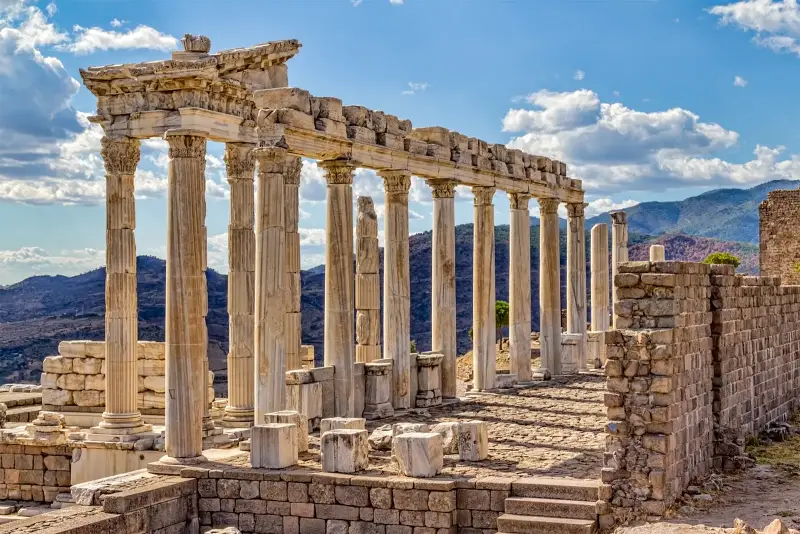
In this blog we give answers for frequently asked questions about Pergamon also known as Pergamum, Izmir.
What is the ancient city of Pergamon Pergamum?
The ancient city of Pergamon, Pergamum or Pergamos, was an important cultural, political, and religious center in the ancient world. It was located in western Turkey, in the modern-day province of Izmir. The city was inhabited from the 4th century BC until the 14th century AD.
Pergamon ( Pergamum) was the capital of the Attalid dynasty, a Hellenistic kingdom that ruled a large part of western Asia Minor. The city was renowned for its impressive architecture, including its monumental buildings and extensive library. The library was said to have been second only to the Library of Alexandria in Egypt.

Today, the ancient city of Pergamon is a popular tourist destination and has been designated a UNESCO World Heritage site. Visitors can explore the ruins of the city’s temples, theaters, and other buildings, as well as its famous Library and the impressive Altar of Zeus.
What is the city of Pergamum Pergamon called today?
The ancient city of Pergamum, also known as Pergamon or Pergamos, is located in western Turkey, in the modern-day province of Izmir. Today, the site is known as Bergama and is a popular tourist destination due to its rich history and impressive ancient ruins. The city of Bergama is located approximately 100 kilometers north of Izmir and is easily accessible by car or public transportation.

What is the city of Pergamum Pergamon known for?
The ancient city of Pergamum ( Pergamon ), located in modern-day Turkey, was known for its cultural, political, and religious significance in the ancient world. Pergamum was the capital of the Attalid dynasty, a powerful Hellenistic kingdom, and was renowned for its impressive architecture, including its monumental buildings and extensive library. It was also a center for the arts, sciences, and medicine, with many famous philosophers and scholars residing there. Today, the ruins of Pergamum are a UNESCO World Heritage site, and visitors can explore its impressive temples, theaters, and other buildings, as well as its famous Library and Altar of Zeus.
What happened in Pergamum Pergamon?
Pergamum was a prominent ancient city that played an important role in the political, cultural, and religious life of the Mediterranean region. It was founded in the 4th century BC and became the capital of the Attalid dynasty, a powerful Hellenistic kingdom that ruled over a large part of western Asia Minor.

Pergamum was known for its impressive architecture It included its monumental buildings and extensive library, which was second only to the Library of Alexandria in Egypt. The city was also a center for the arts, sciences, and medicine, with famous philosophers and scholars residing there.
During its long history, Pergamum faced various conquests and was ruled by different empires, including the Roman Empire. It also played a role in the spread of Christianity, as one of the Seven Churches of Asia mentioned in the Bible’s Book of Revelation.

Today, the ruins of Pergamum are a UNESCO World Heritage site, and visitors can explore its impressive temples, theaters, and other buildings, as well as its famous Library and Altar of Zeus.
Is Pergamum in Turkey?
Yes, Pergamum is located in modern-day Turkey, in the province of Izmir. The ancient city was located in the region of Mysia in western Anatolia, which is now part of Turkey. The modern-day city closest to the ancient site is called Bergama, which is located approximately 100 kilometers north of Izmir.
Who destroyed Pergamon?
Pergamon was not destroyed by a single event or a particular group of people. Instead, the city’s decline was gradual, as it faced various conquests and changes in rulership over time. In the 2nd century BC, the city was conquered by the Roman Republic, and it became an important center of Roman culture and civilization. However, by the 4th century AD, the city had lost much of its former glory and was in decline. It was ultimately abandoned in the 14th century AD, after the Ottoman Empire conquered the region. Today, the ruins of Pergamon are a popular tourist attraction and a UNESCO World Heritage site.
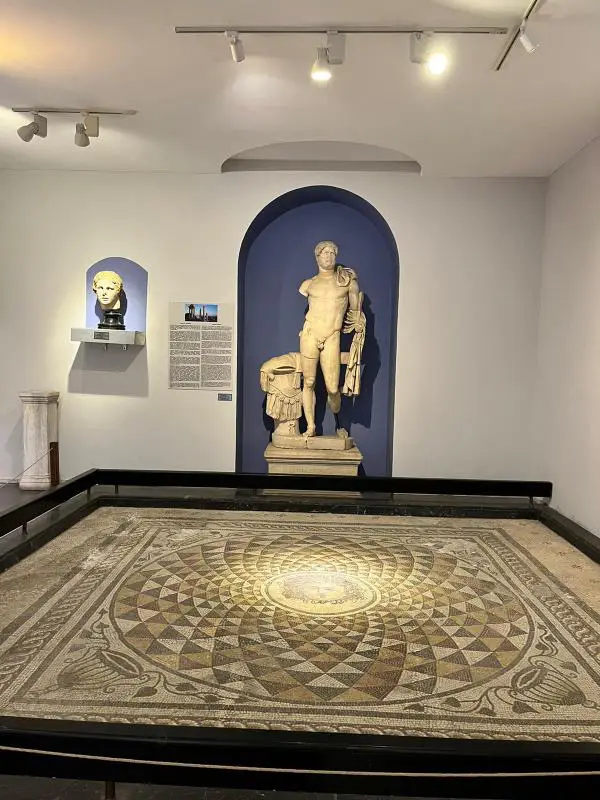
What does Pergamum mean in Greek? What does the name Pergamum mean?
In Greek, Pergamum (Πέργαμος) means “citadel” or “fortress”. The name likely refers to the city’s strategic location on a hilltop overlooking the Caicus River valley. Pergamum was known for its impressive fortifications, which helped to protect the city from invasions and attacks throughout its long history.
What is Pergamum Pergamon in the Bible?
In the Bible, Pergamum is mentioned in the Book of Revelation as one of the Seven Churches of Asia. The letter to the church in Pergamum is found in Revelation 2:12-17, and it addresses the issue of false teachings and idol worship within the church. The letter also commends the church for holding fast to its faith in difficult circumstances and encourages the church to repent of its sins and turn back to God.
In addition to its biblical significance, Pergamum was also an important center of early Christianity. The city was home to one of the earliest Christian communities in Asia Minor, and it played a role in the spread of the faith throughout the region.
Who was the king of Pergamum Pergamon? Who was the last king of Pergamum Pergamon?
There were several kings of Pergamum, who belonged to the Attalid dynasty. One of the most famous and influential of these kings was Attalus III, who ruled from 138 BC to 133 BC and was responsible for bequeathing the kingdom to Rome.
Who built Pergamum Pergamon?
The ancient city of Pergamum was founded by the Greek general and statesman, Philetaerus, in the early 3rd century BC. Philetaerus was a loyal ally of the Seleucid Empire, one of the major Hellenistic kingdoms of the time. He established Pergamum as a center of power and culture in the region. Over time, the city grew in size and importance, becoming the capital of the Attalid dynasty, a powerful Hellenistic kingdom. They ruled over much of western Asia Minor. The Attalids were patrons of the arts and sciences. They expanded and embellished the city, adding impressive monuments, buildings, and works of art. These things made Pergamum one of the most important centers of Hellenistic culture in the ancient world.

Is Turkey a holy place? Is Turkey the Holy land?
Turkey is considered a holy place by many different religions due to its rich cultural and historical heritage. It has been home to various civilizations and empires throughout history, including the Greeks, Romans, Byzantines, and Ottomans, and as a result, it is home to many religious sites and holy places. For example, Turkey is home to several sites mentioned in the Bible, including the ancient city of Ephesus Turkey and the Seven Churches of Asia mentioned in the Book of Revelation. However, Turkey is not typically referred to as “the Holy Land”, which is a term that is more commonly associated with the region that includes Israel, Palestine, and parts of Jordan and Egypt.
What happened to the 7 churches in Turkey?
The Seven Churches of Asia, which are mentioned in the Book of Revelation, were located in what is now modern-day Turkey. Over time, these churches declined in importance and were ultimately abandoned, and today, only ruins and archaeological sites remain. However, some of these sites have been preserved and are now popular tourist destinations, particularly among Christians who are interested in exploring the early history of the religion. Many of these sites have also been recognized as UNESCO World Heritage Sites, due to their cultural and historical significance.
What religion is Pergamon Pergamum?
Pergamon was a polytheistic city in ancient times. The religion practiced by its inhabitants was a blend of various Greek and Anatolian beliefs. The city was home to several temples and sanctuaries dedicated to different deities, including Athena, Zeus, Dionysus, and Asclepius. Pergamon was also known for its impressive altar dedicated to Zeus. The altar was one of the most important religious sites in the city. Later, in the Roman period, Christianity began to spread throughout the region, and Pergamon became a center of early Christianity. However, the city’s ancient religion continued to be practiced alongside Christianity for many centuries.
Who was put to death in Pergamum – Pergamon?
One of the most famous individuals to be put to death in Pergamum was the Christian martyr Antipas. According to tradition, Antipas was the bishop of Pergamum and a disciple of the apostle John. He was reportedly arrested and brought before the Roman authorities, who demanded that he renounce his faith in Jesus Christ and worship the emperor instead. Antipas refused to comply and was executed by being roasted alive inside a bronze bull statue. Antipas is mentioned in the Book of Revelation as a faithful witness who was martyred for his faith (Revelation 2:13).
Was Pergamum – Pergamon in Rome?
Pergamum ( Pergamon ) was not located in Rome, but rather in what is now modern-day Turkey. However, during the period of Roman, Pergamum was an important center of Roman power and culture. It played a significant role in the history of the Roman Empire. The city was the capital of the Roman province of Asia. The city was known for its impressive architecture, cultural achievements, and strategic importance. Many notable Romans visited or lived in Pergamum ( Pergamon ), and the city was a center of Roman influence for centuries.
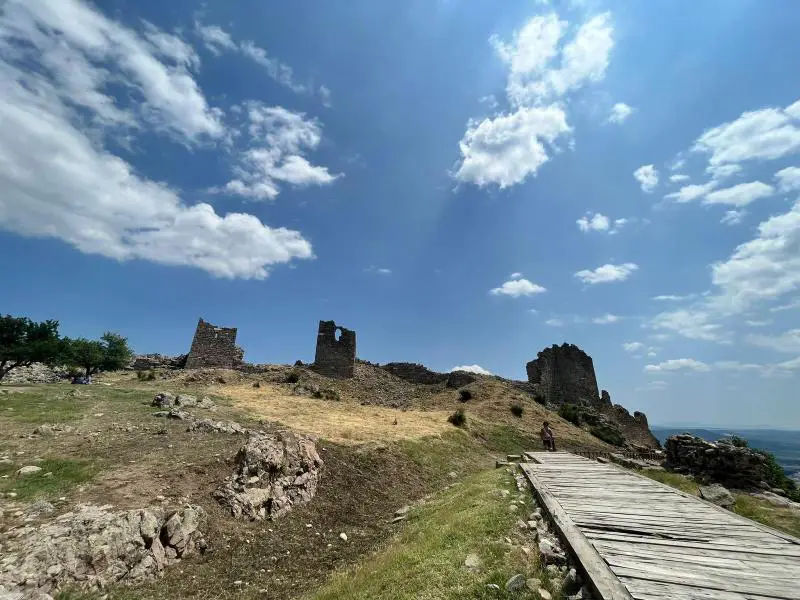
What was Turkey called in Bible times?
In Bible times, the region that is now Turkey was known as Asia Minor or Anatolia. It was a crossroads of various civilizations and empires, including the Hittites, Assyrians, Greeks, Romans, and Byzantines. Many significant events in the Bible took place in this region, including the journeys of Paul the Apostle. He traveled extensively throughout Asia Minor, and the Seven Churches of Asia mentioned in the Book of Revelation. If you are into history, You should read our blogs about Gobekli Tepe, Karahan Tepe and Boncuklu Tarla!
Is Turkey an atheist state?
No, Turkey is not an atheist state. The majority of the population of Turkey is Muslim, with Sunni Islam being the largest denomination. However, Turkey is officially a secular state, meaning that the government is neutral with respect to religion and does not promote or favor any particular faith. Moreover, This principle of secularism is enshrined in the Turkish constitution and has been an important aspect of Turkish society since the country’s founding. While religion is an important part of Turkish culture and identity, individuals in Turkey are free to practice any religion they choose, and there is a diverse mix of different faiths and beliefs represented in the country.
What is the oldest church in Turkey?
The oldest church in Turkey is believed to be the Cave Church of St. Peter. The church is located in Antakya (formerly known as Antioch). It dates back to the early Christian period of the first century AD. Furthermore, The church is located inside a natural cave system. It is believed to have been used by the first Christian community in Antioch. The church is also associated with St. Peter, said to have preached in Antioch, established the city’s first Christian community. Above all, The church has been reconstructed and renovated several times over the centuries. However, the original cave system and some of the earliest Christian artwork and inscriptions. They can still be seen in the church today during your stay .
How to Get to Pergamon-Pergamum?
Here is the google maps link of the ancient city of Pergamon.


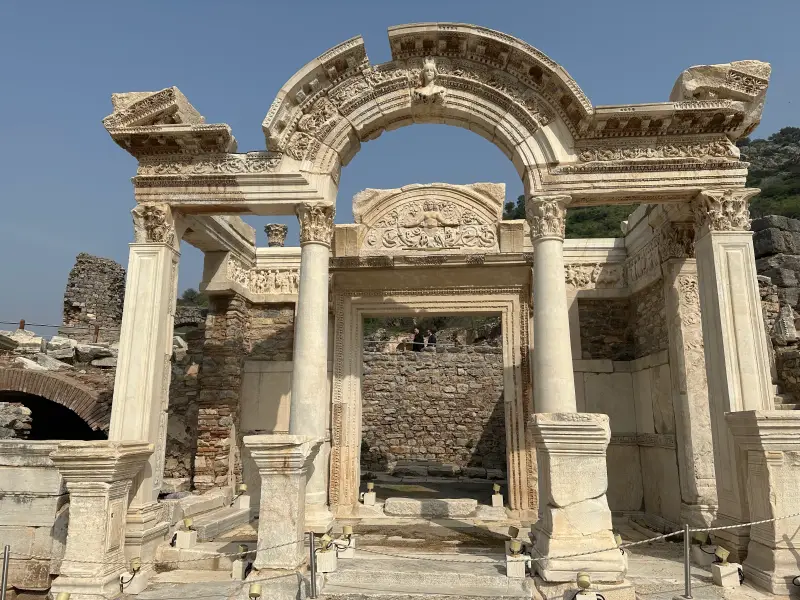





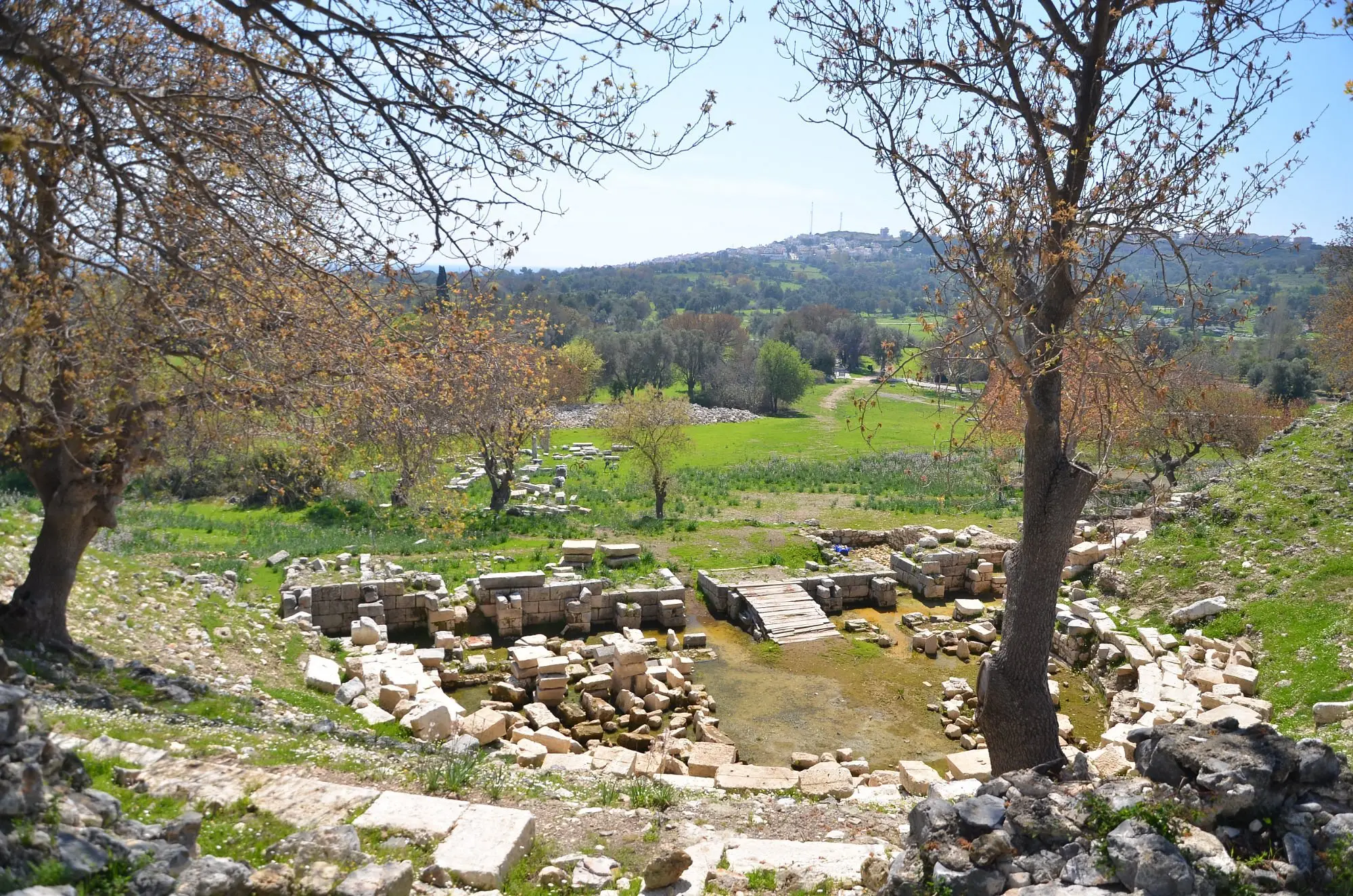
Neat blog! A website like yours is always a dream for me. I hope you will keep posting!
Thank you so much for your interest and comment. We will keep posting. This is not a job but a passion for us. See you!
howdy-do, honorable blog on Pergamon.I will visit there this summer thanks to you!